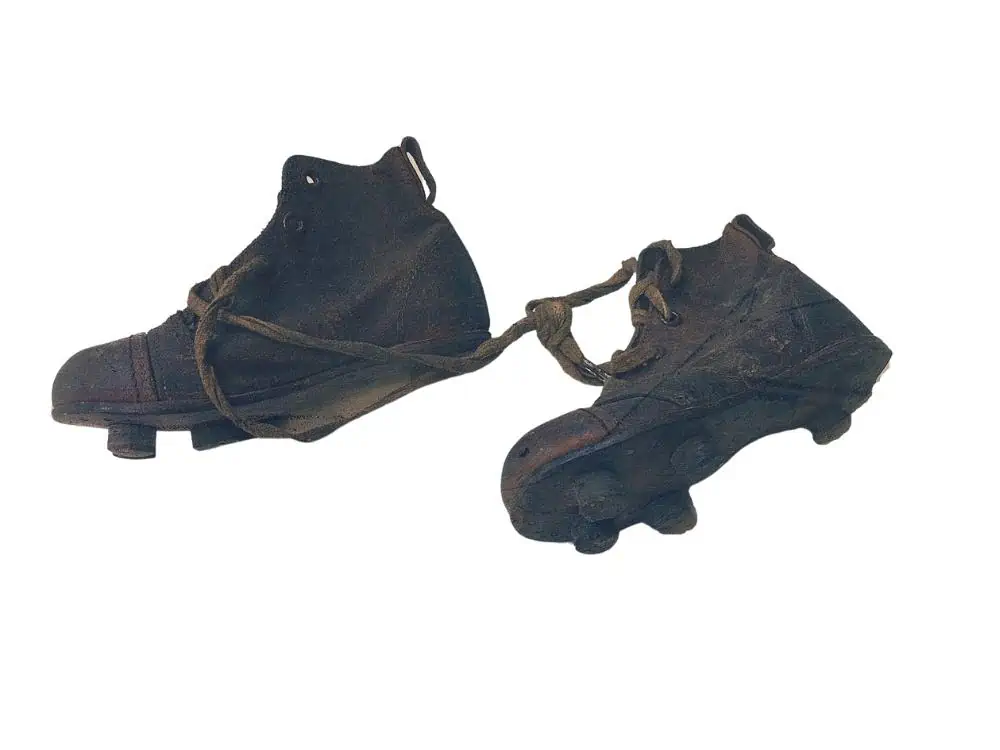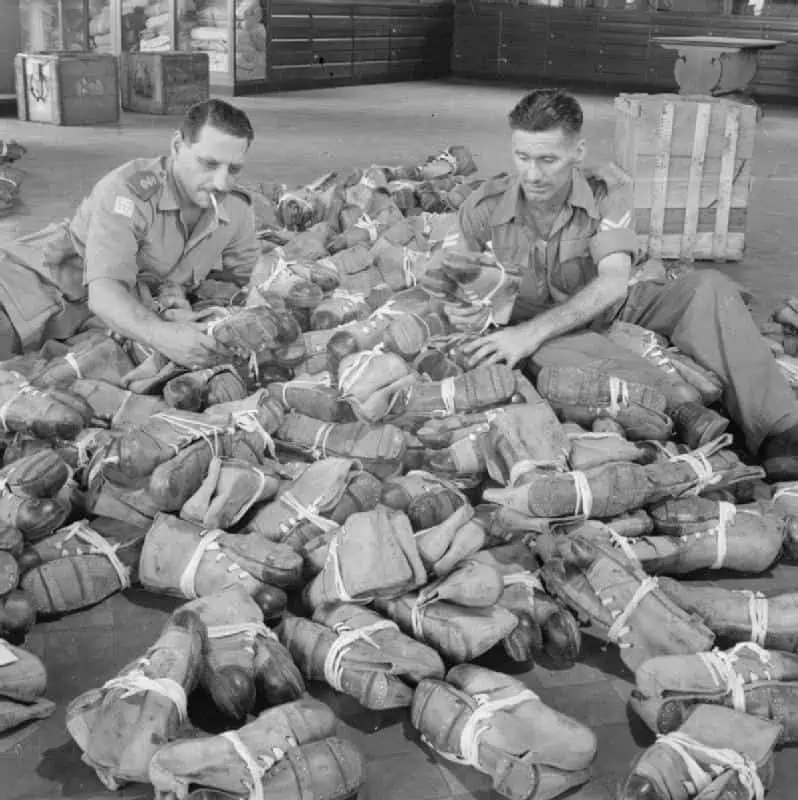Share the post "History Of Soccer Cleats (invention + Evolution)"
Soccer cleats have developed over the years, from fully leather boots to slim and light footwear. The development of cleats has developed with the game of soccer and the technology available.
Since the foundation of soccer in 1863 it’s amazing how the game has developed. In this article we will;
- Soccer cleats in the 1800’s
- Development of cleats in the 1900’s
- Current cleat technology
Let’s see how far we’ve advanced with soccer cleats!

History of The Soccer Cleats – Technology & Evolution
We’re now going to look at why soccer cleats are designed the way they are, and what makes them different from cleats worn in other sports.
We’ll also look into the fascinating history of the ‘football boot’ and what it has become in today’s game.
Soccer Cleats in The 1800s
Soccer, as it’s known today, began to grow in popularity in the 1800s throughout Britain. It was midway through this century that the official Cambridge Rules were first established. Originally, players wore work boots when playing.
These were thick leather boots with steel toe caps and often had metal studs or spikes added to them to give extra support.
As the sport got more popular in the late 1800s, there came the need to develop footwear specially designed for soccer.
The first ‘football boots’ were similar to workboots in that they were leather but the material ran higher up the ankle for added support and the studs were incorporated into the design.

Soccer Cleats from 1900 – 1940s
Much of the soccer-playing world was at war during this period meaning there was a lack of development in the soccer equipment industry.
However, the sport continued to grow and several new soccer brands began to emerge.
Soccer Cleats from 1940 – 1960s
The first major development of the soccer cleat occurred in this era. A lighter and more malleable shoe was created with a view to improving players’ kicking ability, power, and overall control, rather than protecting the feet. The cleat had a lower ankle cut than before.
This period also saw the rise of two brands that would have a significant impact on world sports for decades to come – Adidas and Puma. The origin story of these two companies is a very interesting one, involving the falling out of two brothers.
Adidas introduced the first screw-in studs for the 1954 World Cup Winning German team, to great effect due to the amount of rain that fell throughout the tournament.
Soccer Cleats from 1970s and 1980s
With the 70s and 80s came an influx of modern brands and designs. Cleats were made in many styles and colors. Leather became the primary material used. Cleats were now being designed and manufactured for performance, comfort, and style.
The first modern classics came into popularity: Puma Kings and Adidas Copa Mundials. These cleats are still popular today.
Both of these designs came with the choice of steel or rubber molded studs. It was becoming common to have a choice of stud types and lengths.
Soccer Cleats in The 1990s
The 90s became the first era where the biggest footballing stars were being endorsed to wear a specific brand. Soccer, and in particular, the English Premier League was growing due to large TV broadcasting deals.
Players and what they wore were becoming topics of discussion and so, cleats became a very valuable asset for brands.
Perhaps the most iconic cleat series of all time was born in 1994: The Predator.
This unique design featured rubber ridges on the front and instep of the shoe, to give added control, power, and spin.
Predators established themselves as industry leaders and quickly became synonymous with certain players, like David Beckham, Zinedine Zidane, Steven Gerrard, Alessandro Del Piero, and Raul.
The Adidas predator came in many different ranges from ‘94 until ‘15 when they were discontinued. However, they have since been reintroduced and remain a top-selling cleat.
Soccer Cleats in The 2000s
The turn of the millennium brought further developments to soccer cleats. They became lighter and more flexible. Predators continued to dominate the market but Nike and their Mercurial range were also major players.
Advancements in technology meant that players could have their cleats custom molded to fit their every need. Complete customization became readily available.
Soccer Cleats from 2010s
The 2010s continued in the same vein as the 2000s as the game developed to be more technical and less physical.
Cleats have become lighter and lighter over the years, with the emphasis being placed on technical performance, speed, and agility.
Modern soccer fields are of the highest quality so the soles of the cleats are now equipped with blades and short studs made from plastic and rubber.
It’s become commonplace for players to have their own signature cleat. Marketing and promotion in the social media era mean there is widespread advertising of soccer cleats.
Soccer Cleats in 2021 and The Future
What’s the next big advancement in the game with regard to soccer cleats?
With sports science, statistics, and the most minute details now having a major influence on the game, perhaps certain technologies to track in-game performance will be incorporated into the shoe.
Valuable analytics on movement, power, and technique may well be at our feet… literally.
To see an amazing collection of cleats for all types of players, have a look at our best soccer cleats here.
Soccer Cleats FAQ
What’s the most popular cleat of all time? The Adidas Copa Mundial is the best-selling soccer cleat of all time. However, the Adidas Predator range is among the best-selling cleats worldwide currently.
What’s the lightest cleat available? The Adizero 99g by Adidas is the lightest cleat ever, weighing 99 grams. However, there is limited availability of the item, with only 299 sizes 9s created. It weighs around half of the average cleat.
Can players wear any boot, no matter their position? Yes. In days of old, defenders and the ‘no frills’ types frequently wore a standard, non-flashy cleat.
Strikers and creative players were the main users of stylish and flashy cleats. Nowadays, players in all positions wear different types of footwear.
Much of this comes down to endorsements. At the highest level, players most likely have customized cleats so theirs may be slightly different from the standard model.
Share the post "History Of Soccer Cleats (invention + Evolution)"
Joel is a seasoned soccer journalist and analyst with many years of experience in the field. Joel specializes in game analysis, player profiles, transfer news, and has a keen eye for the tactical nuances of the game. He played at various levels in the game and coached teams - he is happy to share his insight with you.



